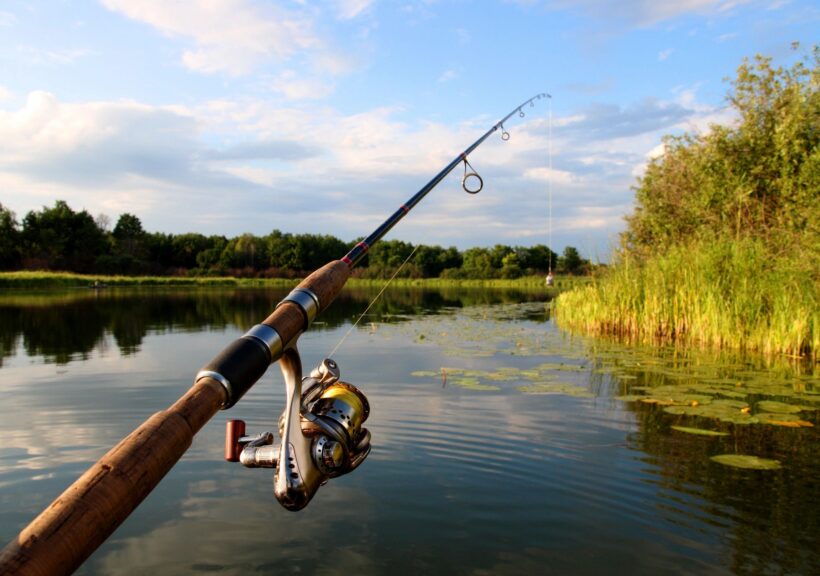SpawnOn’s most basic mission is pretty simple: save the fish. We specify about native runs of anadromous fish and improved sustainability from commercial and sports fishing, but it’s actually more basic than that. We need to use concerted efforts to save the fish or there will be no more fish. None for eating. None for teaching that child or grandchild the joys of one of your favorite pastimes. None.
So even if you don’t necessarily agree with everything we say, you surely can at least see our point a little bit and say, “Sure, something needs to be done about that.”
But then what do you do from there?
Because it seems like a big, looming problem, right? And you’re just one person.
You’re right on both of those accounts. But one person can actually do a whole lot, just by themselves. Because you don’t have to go all in. You start small, with reasonable actionable items that can be done in your daily life. And that you can even encourage others to do. Because it’s actually pretty simple. And because it’s the right thing to do.
Below are ten ways you can get involved.
Catch & Release. It’s not about taking all your fun away. Just consider releasing any fish you do not plan on eating in the near future. And for those you do take home? If you don’t eat them all immediately, properly (or even professionally) seal the rest for storage in your freezer. Don’t waste it.
Use Barbless Hooks When Fishing Catch & Release. There’s no point in catching and releasing if you use a hook that is going to increase the chances for injury or death to the fish. Hooks without barbs decrease the puncture wound, are faster and easier to remove, and reduce stress from overhandling. You can find these at your local tackle shop or online.
Bead Above the Hook. Fish for rainbows with the bead well above the hook. This is when the fish is hooked on the outside of the mouth as opposed to a deep hook, which can significantly lower fish mortality.
Handle Fish with Wet Hands or Don’t Handle Them at All. It’s actually best to not handle them at all, but if you do, always wet your hands to minimize damage to their delicate slime layer, which helps protect the fish from disease.
Use a Net Only if Keeping Fish to Eat. Preferably, don’t use a net unless you’re taking the fish home. Just like dry hands and gloves, mesh or string nets can be extremely abrasive on slimy fish skin. If you must use a net, opt for a rubber net. Its smoother netting will glide along the skin instead of scraping it, making it much less stressful on the fish.
Measure Length and Girth in Water for Use for Replica Mount. Air exposure needs to be kept to 10 seconds maximum, so be prepared to get a nearly instantaneous measurement of your fish in the water. Want to capture the moment? It’s also best to photograph your fish while it is in the water so that it can breathe. If you do quickly lift the fish for a photo, keep it as close to the water as possible and let the photographer dictate the timing.
Use appropriate line strength so not to exhaust the fish during the fight. Fish that struggle for an extended period of time during capture become severely stressed and exhausted. This, in turn, can cause muscle failure and death. That’s why it is imperative to use the proper weight class line strength. And from there, implement other strategies already discussed, specifically leaving the fish in the water so it can recover.
Obey all fish and game regulations and respect the tough jobs the biologists have in managing all this. Though they vary by state, body of water, etc. there are laws in place for keeping and harvesting fish. Always be aware of the applicable rules and regulations for the area you plan to fish and the fish you plan to catch. These rules are there for a reason and help protect everyone and thing.
Release trophy breeding stock. From health concerns, to genetics, to mortality, there are a myriad of reasons to release trophy stock. But for a few big reasons: the biggest fish has the best chance of successful spawning, produces more eggs when it spawns, and is the best for passing on genetics that can increase sustainability and better survival of the species.
Become involved in the issues, make your vote count, and be willing to compromise. If you believe in the mission, there are other things you can do beyond following these guidelines. Vote on the issues. Write your legislators about commercial overfishing, by catch, and conservation issues. Share this information with your friends, family, followers, etc.
The end message here is that fish conservation, any conservation actually, is of vital importance not just to the wellbeing of the fish, but also to people and to the planet itself. It doesn’t have to be a pie in the sky idea, though. We can all do our part, even in small ways. But it has to start now.


Leave a Reply
You must be logged in to post a comment.